We’ve all read a story at one point or another about a rescue dog who spent his whole life living on the streets and being terrified of any and all interactions with humans.
But, how often has anyone heard about a stray dog who flat out refuses to be rescued, and is just so conditioned to living outside that houses scare him?
This is my first time. In this story, we will talk about a dog from a puppy mill in California who just didn’t want to be rescued and didn’t like being indoors at all.
The Dog Refuses To Move
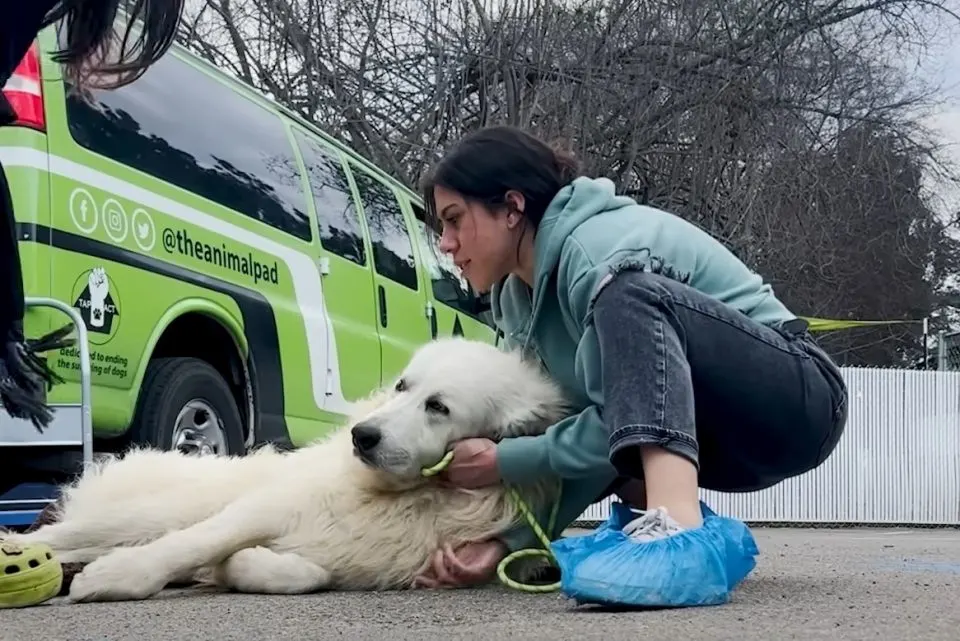
When Lauren and Elli-Ana heard of a dog from a puppy mill who was living on the streets his whole life, they felt really bad for him and tried to rescue him.
What they didn’t anticipate was how difficult it was going to be to rescue this sweet Great Pyrenees, even though he was not aggressive or running away from them.
He simply didn’t move. No matter what they did for him, he was lying on the ground and outright denying any affection they showed him.
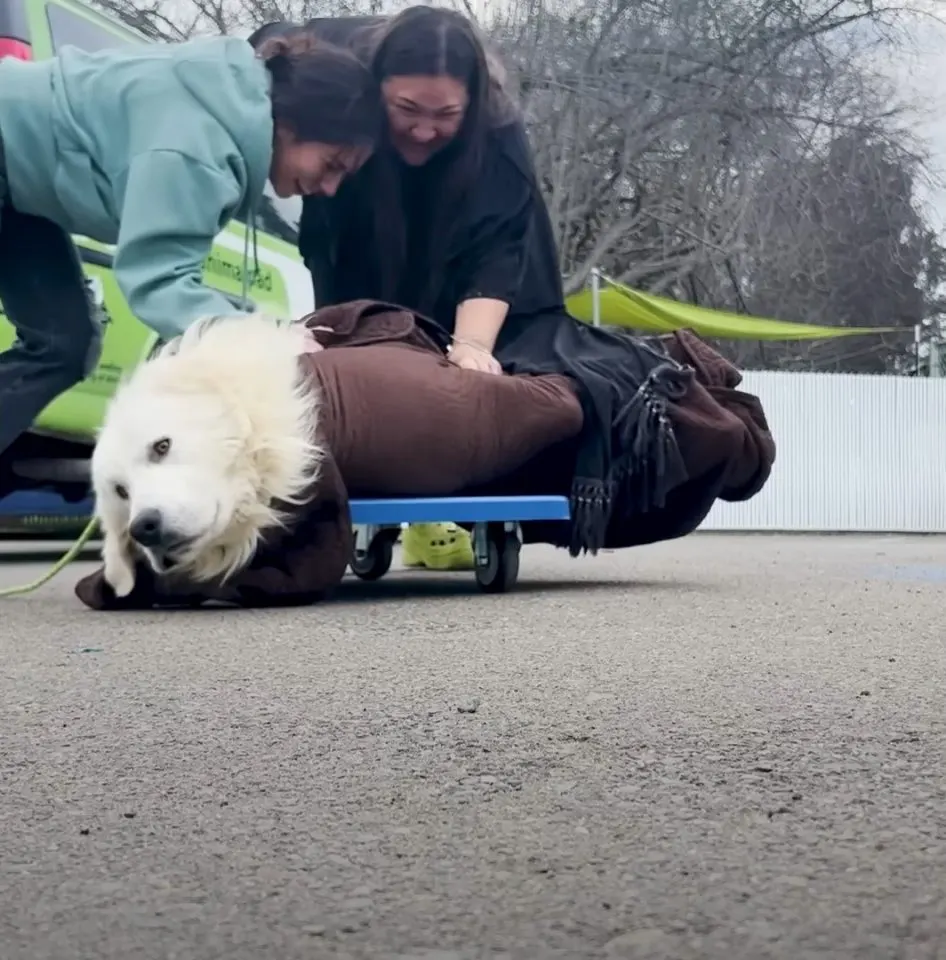
So, his rescuers thought of a plan to take him to the vehicle. They put a blanket around him and carried him all the way to the van.
After taking him back to the shelter in San Diego, they found that nothing had changed about his demeanour. They still had to lift him up to get him to go anywhere.
A Slow And Steady Progress
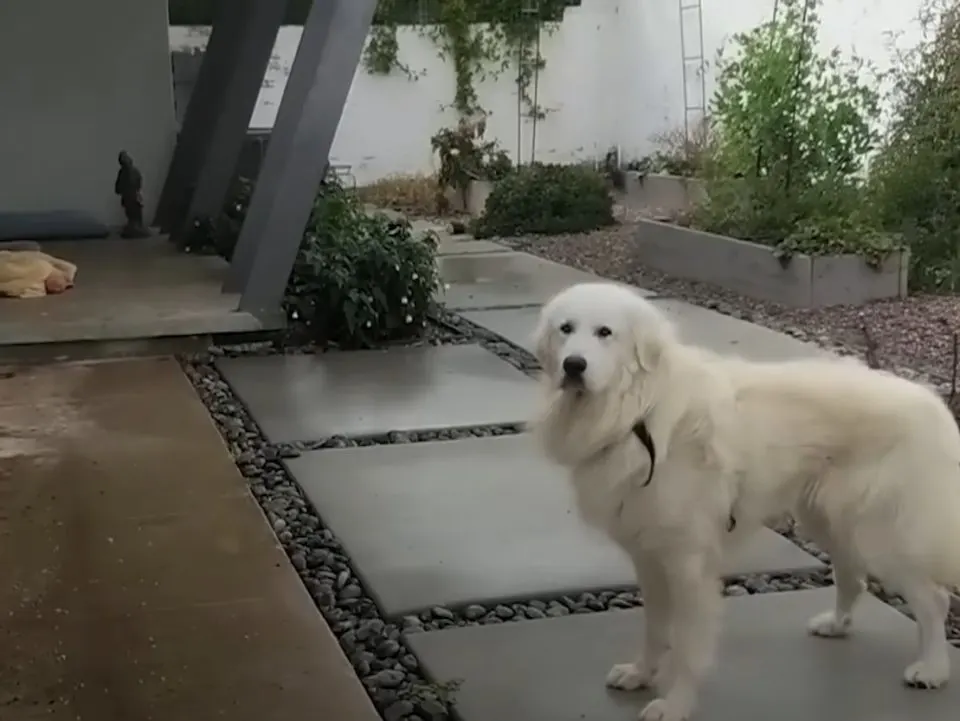
Ultimately, the rescuers thought the best thing for this dog, named Olaf, would be to go into foster care where someone could help him overcome his fears of being indoors.
Anneliese, his foster mom, did her best to accommodate him and didn’t force him to sleep inside. Instead, she made a bed for him right outside the door in the yard.
She told The Dodo: The first few days, he would go to the furthest point in the yard and watch me. He wouldn’t let me get within 10, 15 feet of him.
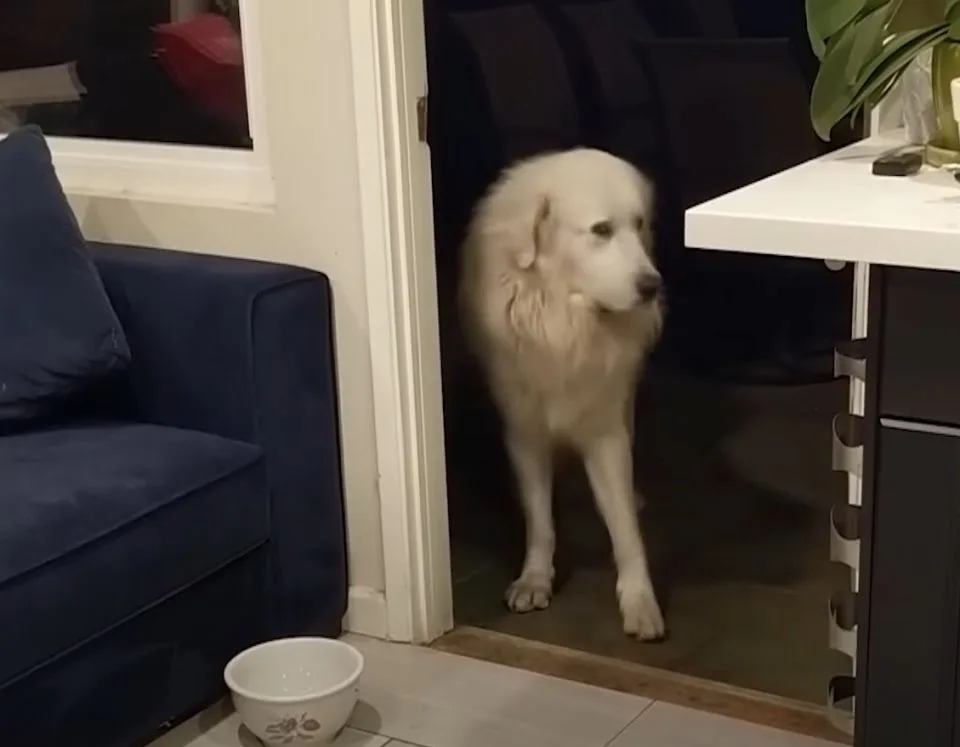
To help him ease up to the possibility of being in a house, Anneliese would often put treats on the porch or leave all the doors open.
At best, he would peek through the doors and then go outside again. However, this started occurring frequently, so it meant that Olaf was making some progress.
Even though he was still somewhat scared of his new foster mom, other dogs at the house were a different story.
Anneliese said: Although he had a lot of fear of me, he had a lot of interest in my dogs.
Olaf Puts His Faith In His Foster Mom
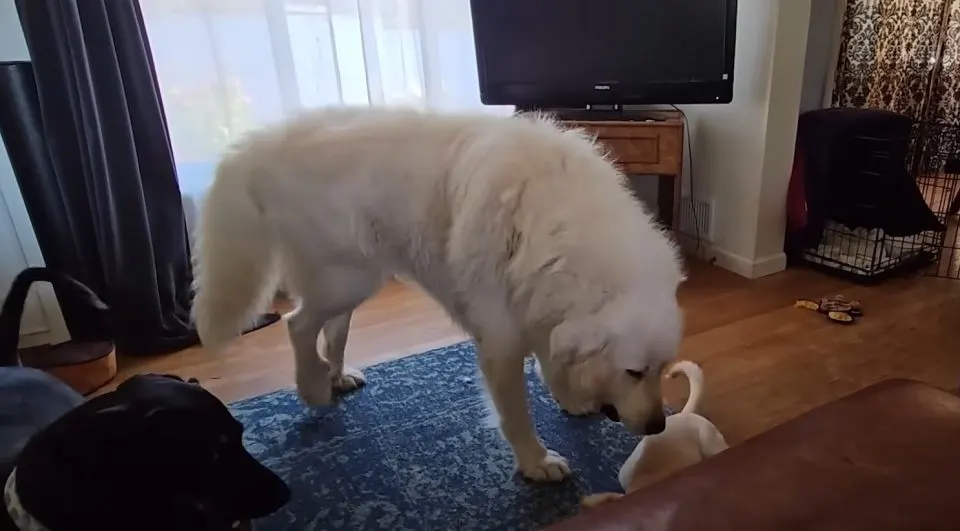
They started playing almost all the time and one of the games they loved was chase. Olaf would chase the dogs, but they ran inside the house, and he would just step back.
The dogs noticed this and paused, wondering why he was not continuing the chase, but he still didn’t like being inside.
However, the biggest turning point for Olaf was the Fourth of July, when there were a lot of fireworks outside and he became really scared.
He went inside the house fully for the first time, which showed that he really felt safe next to Anneliese.
She said: He’s not scared of being inside anymore. I finally got him to take a treat out of my hand.
After everything he has been through, Olaf is finally starting to come out of his shell and be more expressive with his foster mom.
She is so proud of the progress he has made and feels honored knowing that Olaf trusts and loves her.
Ever noticed how a wagging tail or a pair of soulful eyes can instantly melt your heart? Dogs have this uncanny ability to make you smile even on the toughest days. It’s like they have a secret superpower that radiates pure cuteness. From their playful antics to their unconditional love, there’s something about dogs that just tugs at your heartstrings. You can’t help but feel a surge of joy when you see a furry friend bounding towards you, ready to shower you with affection. Dogs seem to have cracked the code on how to be irresistibly adorable, and we can’t get enough of it.
The Science Behind Canine Cuteness
Evolutionary Perspectives on Dog Adorability
When it comes to why dogs are so cute, there’s an evolutionary angle to consider. Over centuries of domestication, dogs have evolved to exhibit certain features that appeal to humans. Traits like big eyes, floppy ears, and playful behavior are not just random; they have been selected through evolution because they trigger positive emotions in humans, fostering a strong bond between dogs and their human companions.
The Role of Neoteny in Dog Appearance
Neoteny, the retention of juvenile features into adulthood, plays a crucial role in making dogs irresistibly cute. Those big, soulful eyes, their floppy ears, and even their playful behavior are all characteristics that mimic the appearance of baby animals. This triggers a nurturing response in humans, making us instinctively want to care for and protect these adorable creatures. The power of neoteny in dog appearance is undeniable and highlights how evolution has shaped dogs to be our beloved companions.
Psychological Effects of Dog Cuteness
The Human-Dog Bond
Dogs’ cuteness plays a significant role in fostering a strong bond with humans. The adorable features of dogs, such as big eyes and floppy ears, trigger positive emotions in us. This leads to the release of oxytocin, often called the “love hormone,” promoting feelings of happiness and affection. As a result, the bond between humans and dogs is strengthened, creating a deep connection based on mutual love and care.
Cuteness and Caregiving Behavior
The innate cuteness of dogs elicits caregiving behavior in humans. The neotenic traits present in dogs, which are juvenile features retained into adulthood, make them resemble baby animals. This similarity prompts a nurturing response in humans, compelling us to care for and protect these lovable creatures. The act of caregiving towards cute dogs reinforces our emotional bond with them, providing a sense of fulfillment and companionship.
The Influence of Dog Breeds on Perceived Cuteness
Popular Breeds Known for Their Cuteness
When it comes to cuteness overload, certain dog breeds are just naturally gifted. Breeds like the Cavalier King Charles Spaniel, French Bulldog, and Pomeranian are renowned for their adorable looks that can melt anyone’s heart. These dogs, with their expressive eyes, compact size, and charming personalities, have a special allure that captivates dog lovers worldwide.
How Breed Traits Contribute to Cuteness
The unmatched cuteness of a dog breed often stems from its unique physical and behavioral traits. For example, breeds like the Dachshund with their short legs and long bodies or the Pug with their wrinkled faces and signature curly tails have distinctive features that add to their overall charm. Additionally, the playful nature of breeds like the Golden Retriever or the affectionate demeanor of the Labrador Retriever play a significant role in enhancing their cuteness quotient. These breed-specific characteristics not only make dogs visually appealing but also endear them to us through their actions and interactions.
Cultural Impact of Cute Dogs
Dogs in Media and Advertising
Dogs play a significant role in shaping popular culture through media and advertising. You often see adorable dog videos going viral on social media platforms, showcasing their cuteness. In commercials, dogs are used to evoke emotions, create brand awareness, and enhance product appeal. Their charm and appeal make them perfect companions for marketing campaigns, reinforcing their status as lovable and endearing animals.
The Rise of Dog-Focused Social Media Content
With the rise of social media, dog-focused content has become increasingly popular. Platforms like Instagram and TikTok are filled with photos and videos of cute dogs, capturing the hearts of millions worldwide. Influential accounts centered around dogs have gained massive followings, showcasing their daily lives, cute antics, and unique personalities. This trend has created a community of dog lovers sharing their passion for these adorable animals and spreading joy across the internet.
How Our Perception of Cuteness Affects Canine Welfare
The Downsides of Breeding for Cuteness
Breeding for extreme cuteness in dogs can lead to health issues. Some breeds with exaggerated features, like short snouts in brachycephalic breeds, may experience breathing difficulties. It’s important to consider the well-being of the dog when prioritizing looks over health in breeding practices.
Responsible Breeding and Ownership Practices
Responsible breeding focuses on maintaining the overall health and temperament of dogs. When choosing a breeder, look for those who prioritize the health of the dogs over appearance. As a dog owner, ensure you provide proper care, training, and socialization to help your furry companion live a happy, healthy life. Remember, responsible ownership plays a crucial role in the welfare of all dogs.
Conclusion
So, there you have it – dogs are just naturally adorable beings that have a way of melting our hearts with their cuteness. From their big eyes to their playful antics, there’s no denying the charm they bring into our lives. The evolutionary reasons behind their irresistible appeal and the cultural impact they have on our society further solidify their status as beloved companions. However, it’s essential to remember the importance of responsible breeding and ownership to ensure that all dogs are healthy and happy. By appreciating their cuteness while also prioritizing their well-being, we can continue to enjoy the special bond we share with our furry friends.
Frequently Asked Questions
Why are dogs considered cute?
Dogs are considered cute due to their evolutionary traits like big eyes, floppy ears, and playful behavior, which trigger positive emotions in humans. This cuteness, known as neoteny, enhances their appeal and fosters emotional connections with people.
How do cute dogs impact popular culture?
Cute dogs play a significant role in shaping popular culture through media and advertising. They are often used in commercials to evoke emotions and enhance product appeal, showcasing their lovable nature and creating connections with audiences.
What is the downside of breeding for extreme cuteness in dogs?
Breeding for extreme cuteness in dogs can lead to health issues such as breathing difficulties in breeds with exaggerated features. It is crucial to prioritize responsible breeding practices that prioritize the health and well-being of dogs over appearance.
How can responsible ownership ensure the well-being of dogs?
Responsible ownership plays a crucial role in ensuring all dogs lead happy, healthy lives. This involves providing proper care, nutrition, exercise, and regular veterinary check-ups, as well as promoting a safe and loving environment for the dog to thrive.
[no_toc]

Hey there, I’m Janet Brooks, a dog-loving student from California. I’m all about helping pups in need, especially those without homes. Me and my awesome friends work together to give shelter and love to stray dogs. Oh, and I also write blogs about dogs to share helpful info.